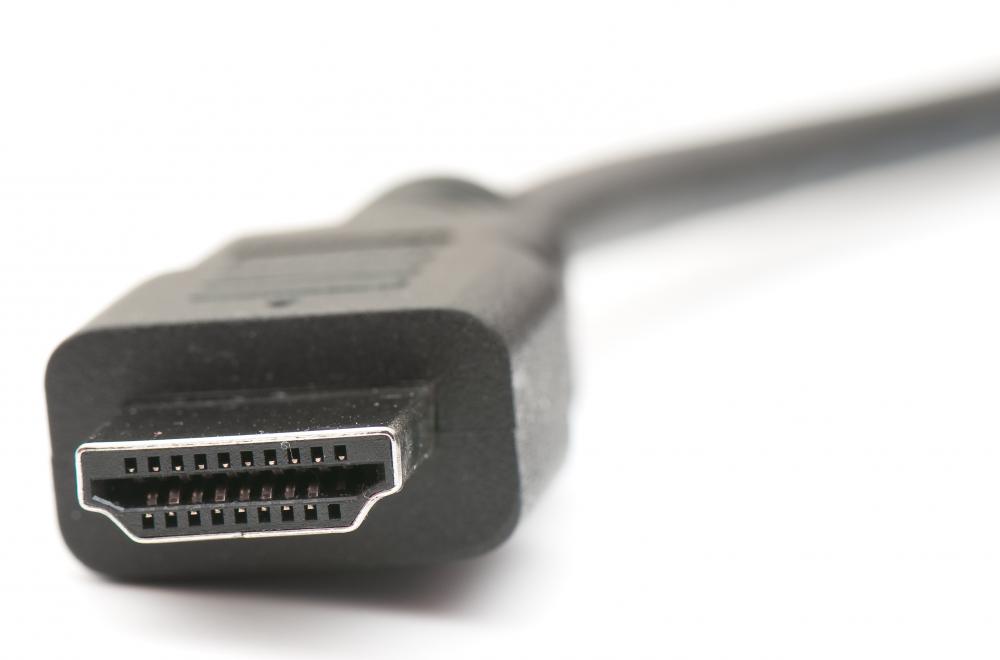At WiseGEEK, we're committed to delivering accurate, trustworthy information. Our expert-authored content is rigorously fact-checked and sourced from credible authorities. Discover how we uphold the highest standards in providing you with reliable knowledge.
What is an HDMI® Repeater?
High Definition Multimedia Interface (HDMI®) is the preferred interface for high definition television (HDTV) and audio visual products such as DVD players, Bluray® and gaming devices. The interface sends high-definition, digital video and multichannel digital audio over a single streamlined cable. While the HDMI® specification does not include a limitation for transmitting HDMI® over cable, cable construction itself leads to degradation of the signal. Installations that require longer cable lengths can benefit from using an HDMI® repeater.
As of 17 October 2008, HDMI® cables are labeled according to one of two specifications: Category 1-certified cables, or Category 2-certified cables. Category 1 cables are "standard" cables, supporting resolutions up to 1080i, while Category 2 cables are "high-speed" cables, supporting 1080p and beyond, (e.g. HDMI® 1.4 which specifies dual stream 1080p for 3D television).

Certified cables are constructed with the necessary quality to deliver the signal faithfully over the length of the cable, but cable lengths are limited, normally to 16 feet (5m), or for higher quality cables, 49 feet (15m). Longer cables are available, but depending on quality, they can end up delivering a weak signal that introduces problems like freezing or pixilation. For installations that require longer cable lengths, a better option might be to join cables together using an HDMI® repeater that will boost the signal to prevent degradation.

An HDMI® repeater is a standalone device that can be powered by its own AC source, or by the 5-volt charge present within the HDMI® cable. Attach an incoming HDMI® source to the input port, and another HDMI® cable to the output port. The repeater will regenerate the incoming HDMI® to ensure signal integrity through the secondary cable, allowing custom length installations. Custom lengths are especially handy when running cable through walls, floors or ceilings. If required, the product can also work in series. Depending on the model, an HDMI® repeater can be as small as a connector or adapter.

An HDMI® repeater should be compliant with imbedded video copyright protection, or High Bandwidth Digital Content Protection (HDCP). HDCP encodes movies to prevent piracy. In order for the repeater to work properly, the source and display must also pass HDCP content.
An HDMI® repeater might also be referred to as an HDMI® amplifier, but not every HDMI® extender boosts or amplifies the signal. Some extenders merely equalize or clean up the signal.
HDMI® repeaters range in price from about $35 US Dollars (USD) to well over $100 USD. Smaller, adapter-type models that don’t require external power and feature LED indicators are generally mid-priced. Most models specify how far the signal can be extended, typically 100 feet (30.48m) and 200 feet (60.98m).
AS FEATURED ON:
AS FEATURED ON:













Discuss this Article
Post your comments